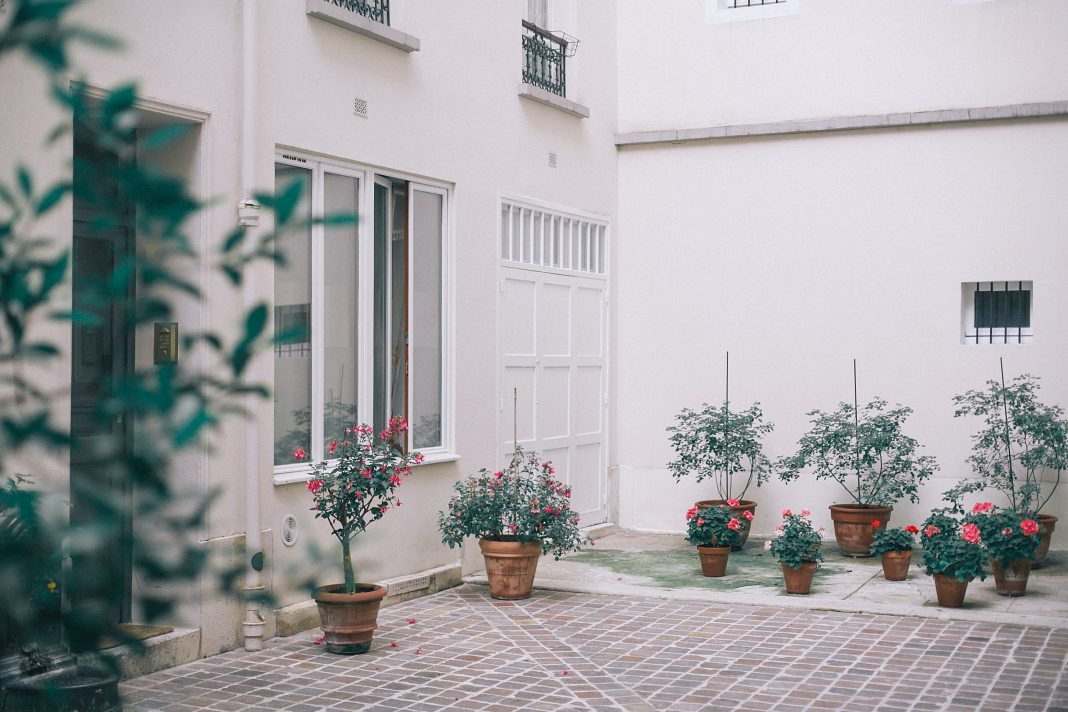Decor With Indoor Plants
English Ivy
English ivy not only thrives in low light, but it’s also an air purifier capable of filtering toxins, mold, and faces from the air.
Spiderweb
This South African cascading plant not only grows far and wide but flowers too! Don’t be surprised if you see small white flowers sprouting from the leaves of the spider plant.
Philodendron Heart-Shaped Leaves
The heart-shaped plant can be potted or hung. In fact, adding them to hanging baskets is a good idea if you have pets or young children, as these beautiful things are poisonous. Caring for this houseplant is easy. Water once a week. If the leaves turn brown, it means the plant can use more water.
Red Rose
Anthuriums flower all year round and each bloom lasts about six weeks. Wax flowers can be pink, white, or red. This plant grows best when watered once or twice a week. Wipe the leaves with a damp cloth from time to time if you notice a build-up of dust or insects. keep it fresh all time, and home decorate making it beautiful with indoor plants
Kokedama
Kokedama, also known as “poor man’s bonsai”, is Japanese moss balls. “Kokedama gives you the option of having trees without a planter,” says Muñoz. Hang them from the ceiling in low to medium light (too much light will dry them out). Soak them once a week before hanging them up and spray them as needed.
Soybean
Marimo is another type of moss ball, but this one lives in water. It doesn’t like too much light, so be sure to place your maximum vase in a shady spot.
Begonias
The colorful leaves of begonia rex can grow up to 9 inches long and 5 inches wide. They like indirect light as well as humidity. Water whenever the soil becomes dry to the touch.
Peace Lilies
Lilies purify the air, bloom all year round, and do not require special care. It only works well in low light, but you can expect more blooms if placed in bright, indirect light.
Dancing Cactus
Jungle cacti are epiphytic, meaning they grow (harmlessly) on tree trunks in their natural habitat – and they’re nothing like the spiny cacti you might imagine.
One variety, Hatiora salicornioides, is more like shaggy moss and will produce small, soft yellow flowers when the time comes.
Pots use succulent soil and water when the soil is almost (but not completely) dry. With its slender, sometimes supple branches, it’s easy to see where the name dancing cactus comes from.
Schefflera “Sun”
Good drainage is definitely a must for Schefflera’s “Sun” – never let it sit in a tray of standing water. Its broad leaves are usually lemon yellow. The biggest advantage of this beauty: With proper care, it will grow tall, because it is, in fact, a tree. It makes decoration your home with indoor plants.
Ngoc Lan
Another shade-loving plant grown for its leaves, jasmine orchids is not as difficult to care for as their more famous cousins. The leaves are dark purple and striped, with a velvety texture. Water when the soil is dry.
Blood Lust Tree
Dracaena means “female dragon” in Greek. This low-maintenance plant is so called because of the red sap that forms in the trunk, which looks like a dragon’s blood. It is native to Madagascar and is well suited to growing indoors in semi-shade or dimly lit areas (e.g. through blinds). Putting these plants in the sun is really bad for them: The sun can burn their leaves!
Rattlesnake Tree
Often grown specifically for foliage, the rattlesnake plant certainly looks very bushy. The rattlesnake plant has lance-shaped, pointed leaves with variegated patterns of dark green, bright green, and purple.
They love moisture, so keep a water bottle nearby and spray it when you feel comfortable, and water the soil before it dries out completely.
The Vegetative Nerve (Fittonia)
We love the intricate patterns on the leaves of this South American plant. They really make the plant stand out and the pattern can be red, pink, or white (pictured).
Pineapple
With their broad, shiny leaves and swirling asterisks, pineapple plants look a bit like giant flowers and they come in all shapes and sizes. Since their root systems are so small, you won’t actually be watering the soil they’re in – instead, leave a small puddle in the center of the plant’s cup.
Arrowhead Factory
Rounding out our list of the best low-light houseplants are arrowroot plants (also known as American evergreens). You can grow it in a pot, hang it, or even grow it along a trellis or pole. from this work, we can observe that the house is more attractive when indoor plants are used for home decoration.












